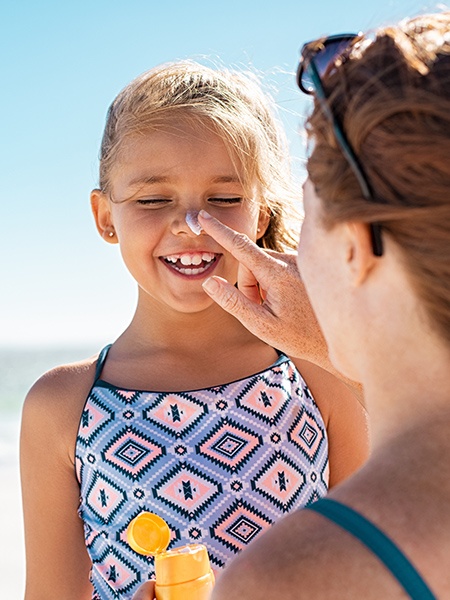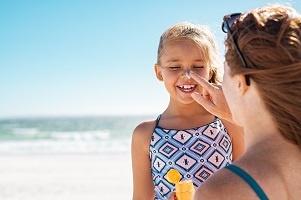How To Best Protect Your Skin From The Sun’s Rays
 Although some sun exposure is good for the body due to its production of vitamin D, we must use caution to not overexpose ourselves due to the skin cancer risks.
Although some sun exposure is good for the body due to its production of vitamin D, we must use caution to not overexpose ourselves due to the skin cancer risks.
There is no such thing as a safe ultraviolet (UV) ray, according to the American Cancer Society.
While most ray exposure comes from the sun, man-made sources such as tanning beds can be equally dangerous in exposing people to UV rays. There are two types of UV rays that reach the Earth’s surface:
- UVA rays: Lower-energy rays that are linked to skin damage such as wrinkles, loss of elasticity and spots, but they can also play a factor in skin cancer. Up to 95% of the sun’s rays reaching the Earth are of this variety.
- UVB rays: Stronger than UVA rays, these rays can directly damage skin cells, causing sunburn and most types of skin cancers.
How can you limit your exposure to these rays? For one, stay away from tanning beds. No need to sign up for excessive UV ray exposure.
Two, avoid being in the sun as much as possible between the hours of 10 a.m. and 4 p.m., when the sun’s rays are strongest. Opt for shady spots as much as possible when outside during these hours. To help you know how strong the sun’s rays are, look at your shadow. A shadow shorter than your height means the UV rays are strongest.
If you must be in the sun, remember the phrase “Slip! Slop! Slap! And Wrap.” This campaign got started in Australia and New Zealand during the 1980s, but it applies today in all corners of the world:
- Slip on a shirt – Covered skin is more protected than uncovered skin. Dark colors protect the skin more than light colors.
- Slop on sunscreen – Apply liberally to all exposed skin. Select a sunscreen that protects skin from both UVA and UVB rays. Higher SPF numbers will protect your skin more fully for longer amounts of time. (Sunscreens with SPF 15 block about 93% of UVB rays; SPF 50 blocks 98%).
- Slap on a hat – This helps shade your face, head and ears (if it’s a wide-brimmed hat).
- Wrap on sunglasses – Helps protect your eyes and the skin near them.
Some people think a good tan will prevent sun damage and skin cancer. Melanin – the pigment that causes a tan – is created when UV rays reach the skin. Melanin does absorb some of the sun’s rays, serving as the body’s first line of defense against the sun. It’s important to remember that prolonged sun exposure can still damage the skin and cause cancer, even in the presence of a good tan.
For information on services available at Ohioans Home Healthcare, call 855.600.0806 or contact us online.

